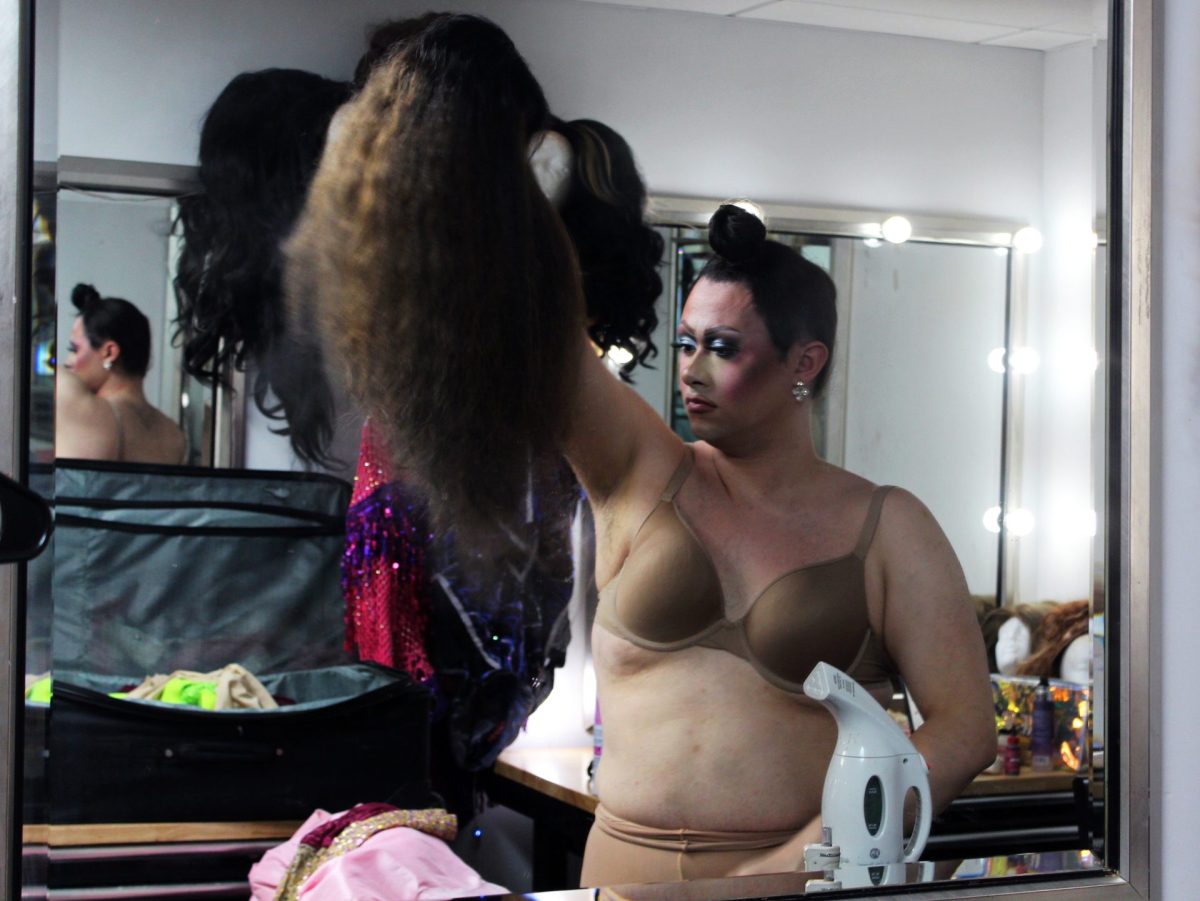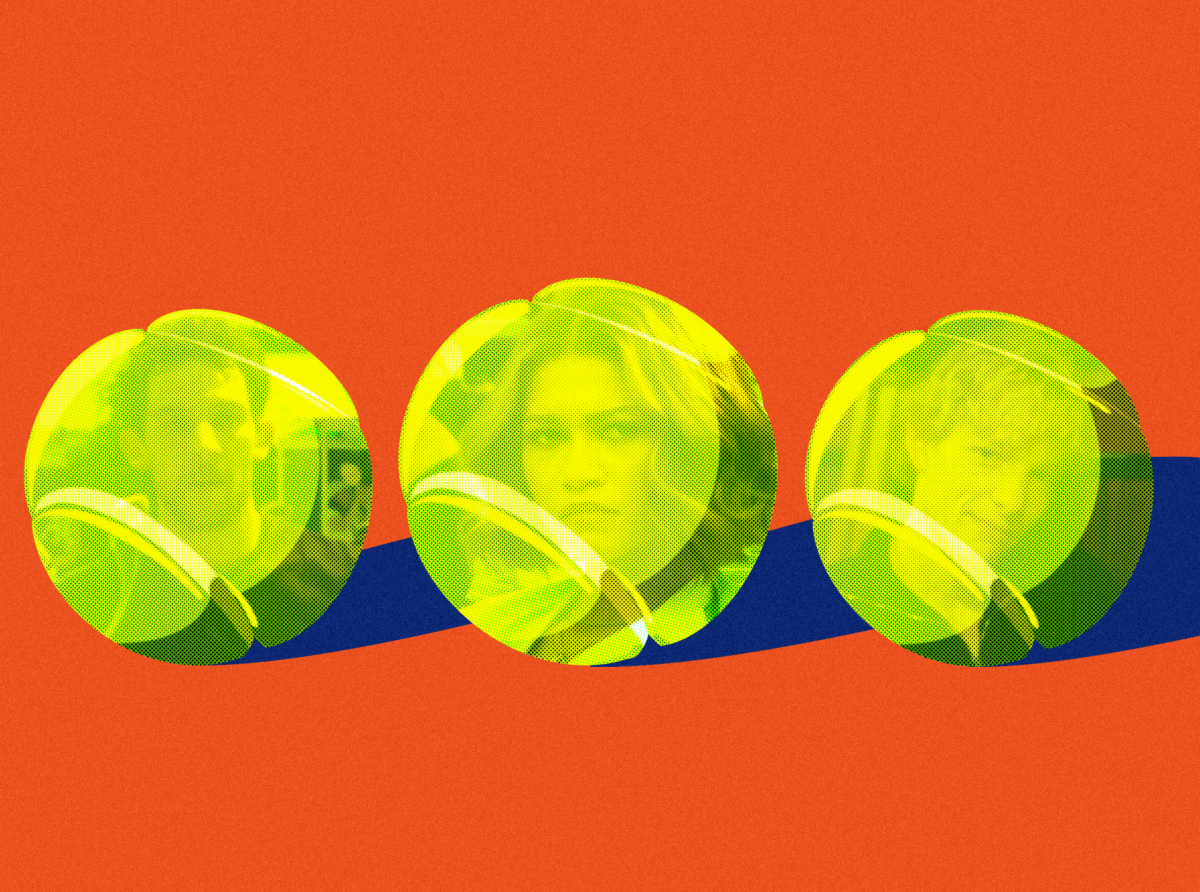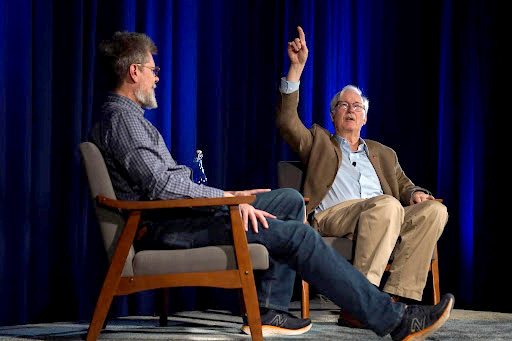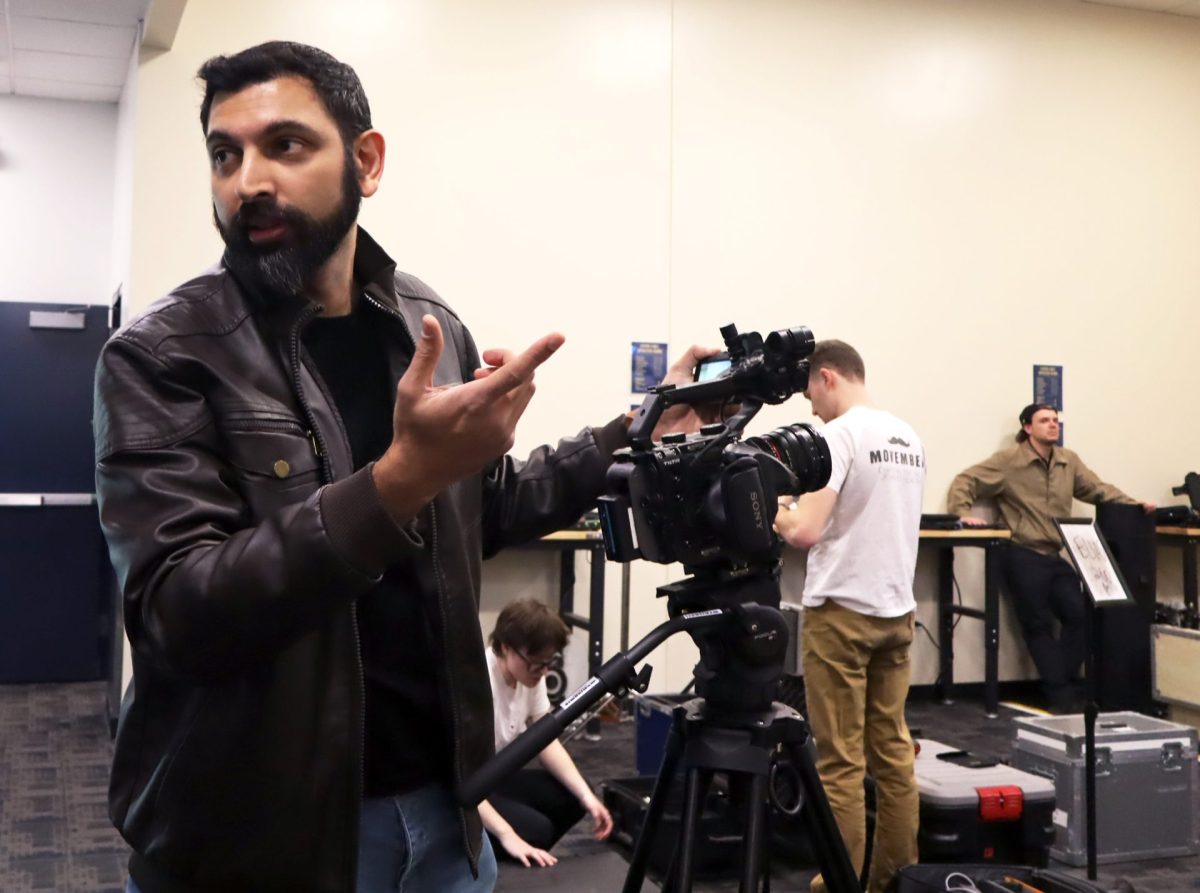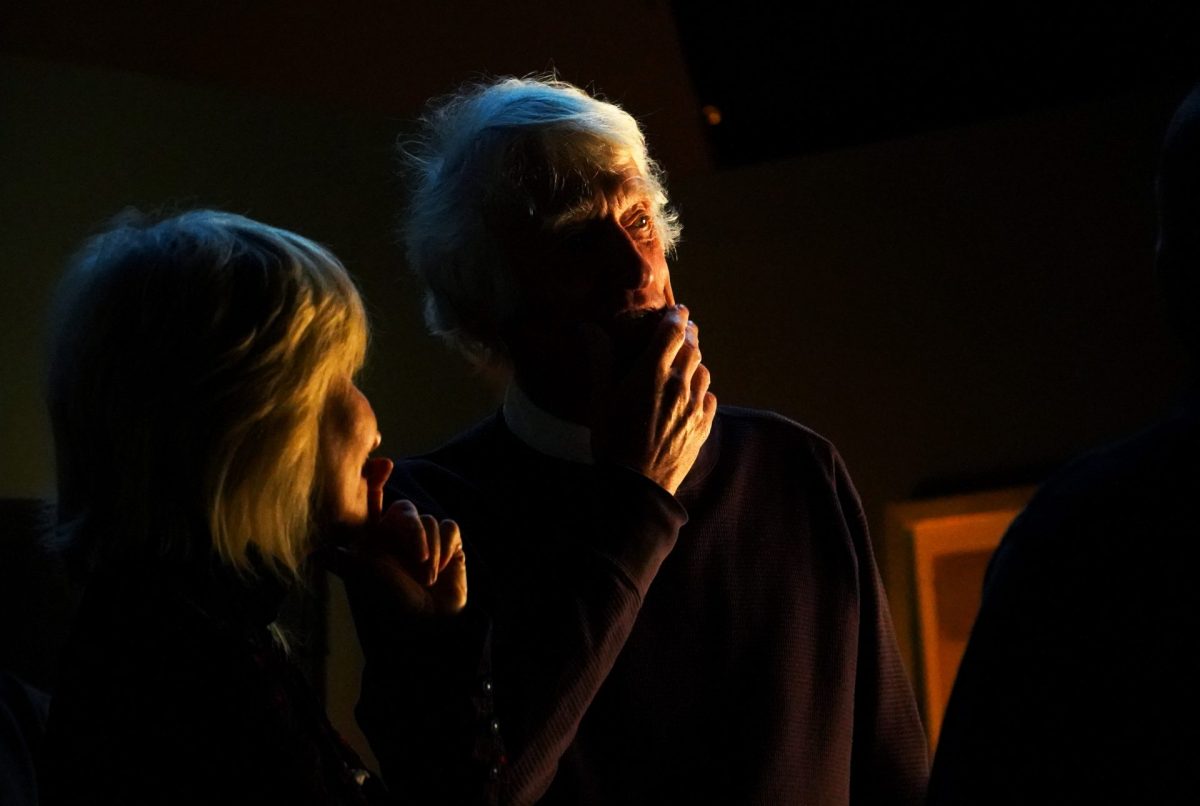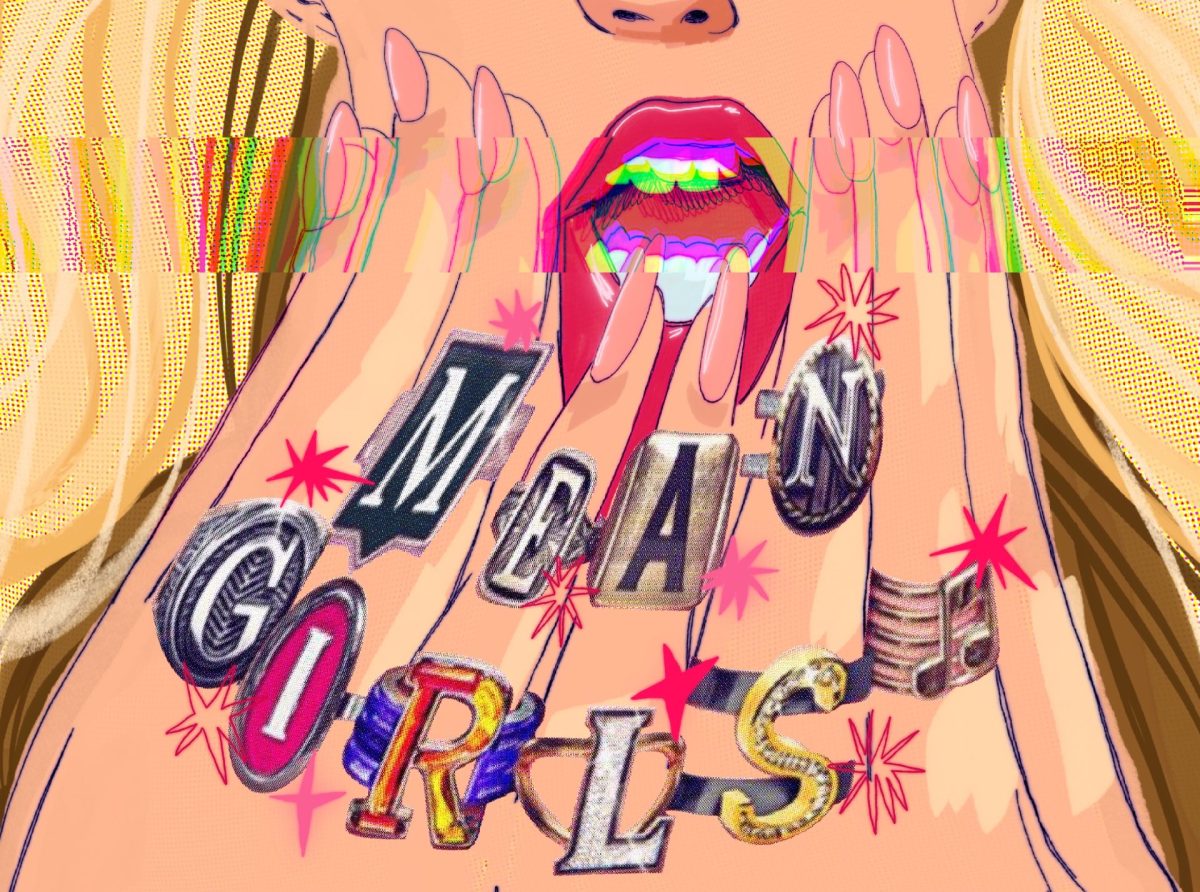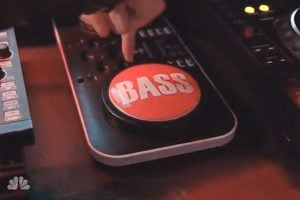
In the same week the word “dubstep” was recognized by Merriam-Webster, Andy Samberg returned to Saturday Night Live with The Lonely Island to parody money- hungry DJs in a skit titled “When Will the Bass Drop?”
The video features Samberg as Davvincii, a blatant spoof of DJ and producer Avicii. As Davvincii, Samberg opens his set with a dramatic click of a mouse, which is met with a roar of approval. His track is a repetitive mix of grinding and dissonant synth trumpets paired with a baritone chant, “When will the bass drop?”
In stereotypical fashion, the synth climbs in pitch like a chugging electronic rollercoaster as Samberg teases the drop by hovering his pointer finger over a big red button with the word “bass” on it. Between multiple fake-outs, Samberg finishes a self- portrait and tends to his rock garden.
“This is music,” says one faux attendee.
“This is the best day of my life!” says another, played by Bobby Moynihan.
As the synth creeps upward in pitch, the audience swipes their credit card and a handful of men drop off sacks of cash. But when he drops the bass with a push of the ominous button, Lil Jon flashes on Davvincii’s monitor to command, “Get turned up to death!”
The audience members’ heads explode and gratuitous amounts of fake blood spurt across the dance floor.
Certainly the skit is foremost meant to be taken for its comedic value; this is The Lonely Island after all, the parody music group who masterminded hits like “D— in a Box.” But Samberg and company could have easily focused instead on the other stereotypes that occasionally contribute to EDM’s poor reputation, like the occasional overuse and misuse of drugs or outlandishly clad attendees.
Instead, the short points to something more important: overpaid and hyper- popularized DJs and a lemming audience that seeks nothing more than a satisfying breakdown. Avicii and similar DJs are stacking their bank accounts not by performing, but largely by pressing play.
Jack Maurice, who produces electronic music under the name Overdo$e, says that he tries to distance himself from the commercialized, pre-packaged EDM parodied in Samberg’s skit.
“The big point that I see in the video is (that) at shows a lot of people ogle over DJs spinning sets when they’re not really doing much musically,” Maurice, who opened for Adventure Club at After Hours last weekend, said. “There are definitely DJs that can spin (amazing) musical sets, but in the current scene, a lot of DJs do basic mixing that is truly not impressive.”
Today’s DJs do not simply provide background music to a party; they are the party. They command the stage and lead the audience, and similarly, Samberg levitates above the stage like a club messiah when the bass is finally dropped.
In an interview with GQ, the Swedish producer whose real name is Tim Bergling, admitted that most of his dial turning was simply adjusting the volume.
“There’s something fogeyish about someone saying ‘this is music’ as a punch line — it brings to mind people who claimed that rap wasn’t music, or rock or jazz,” Slate writer Forrest Wickman said in his commentary of the skit. And at face value, Samberg’s mockery of a young 20-something producer who has cracked the club music code is akin to an old rocker reminiscing about the days when so-called guitar music ruled the airwaves.
But this is not about authenticity in music or even what constitutes a real musician. The landscape is changing, and even the more esteemed rock bands nowadays — from Radiohead to The War on Drugs — utilize some form of synthesizer or samples.
There is certainly nothing inherently wrong about EDM or even DJs in particular. Electronic music has the capacity to be fun, and certainly dancing is meant to be a fun way to physically engage with the music. Personally, I do not see a reason to distance myself from electronic music producers, nor do I think the somewhat pompously- termed “intelligent dance music” is the only way to truly be an avid listener.
“I believe there are two sides to the EDM world,” Daniel Pritchard, a junior in the School of Music, said. “There are those who enjoy being there for the music, and there are those who are just there for the party.”
Certain producers can capitalize on audience members who need the instant gratification of a climax, whether in the form of the bass drop or the four-chord hummable melody. Shallowness is not the issue; it’s that the passive attitude means that such musicians can water down and minimize their efforts and still perform in sold out stadiums.
“(Avicii) sells out stadiums because the majority of his crowd are looking for an excuse to party and, in a lot of cases, abuse drugs,” Pritchard said. “It strips EDM of its authenticity and seems to have become a demeaning term altogether, especially for other electronic artists.”


